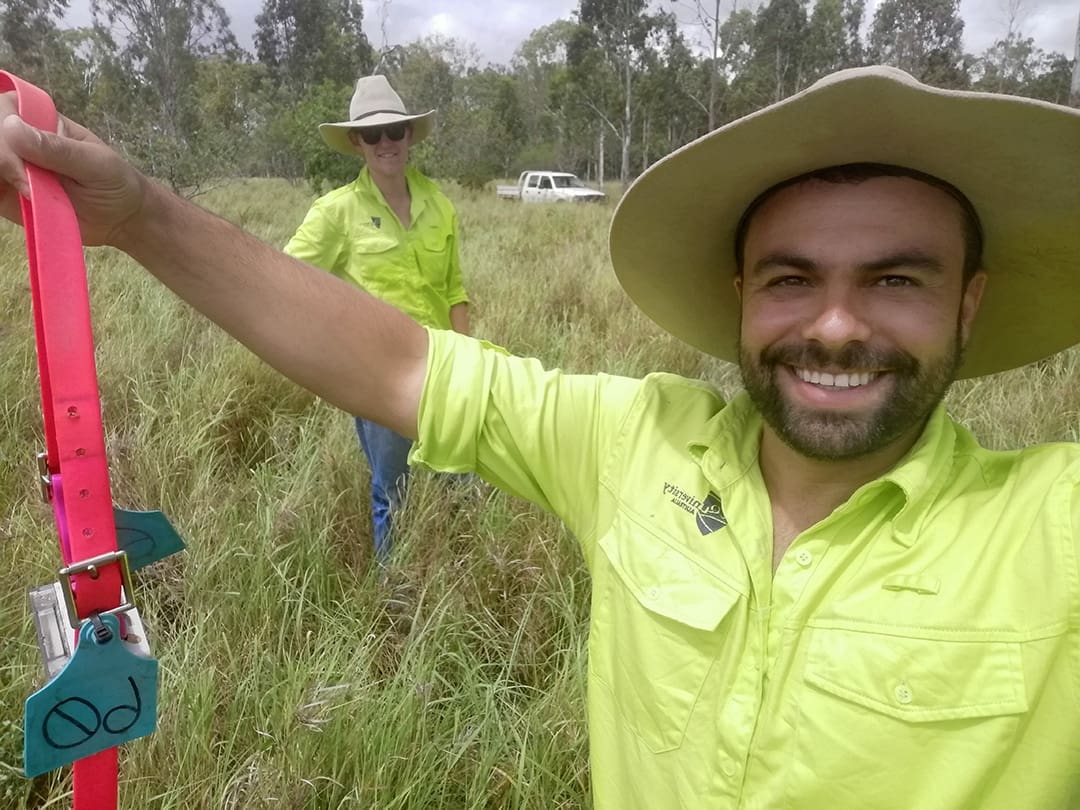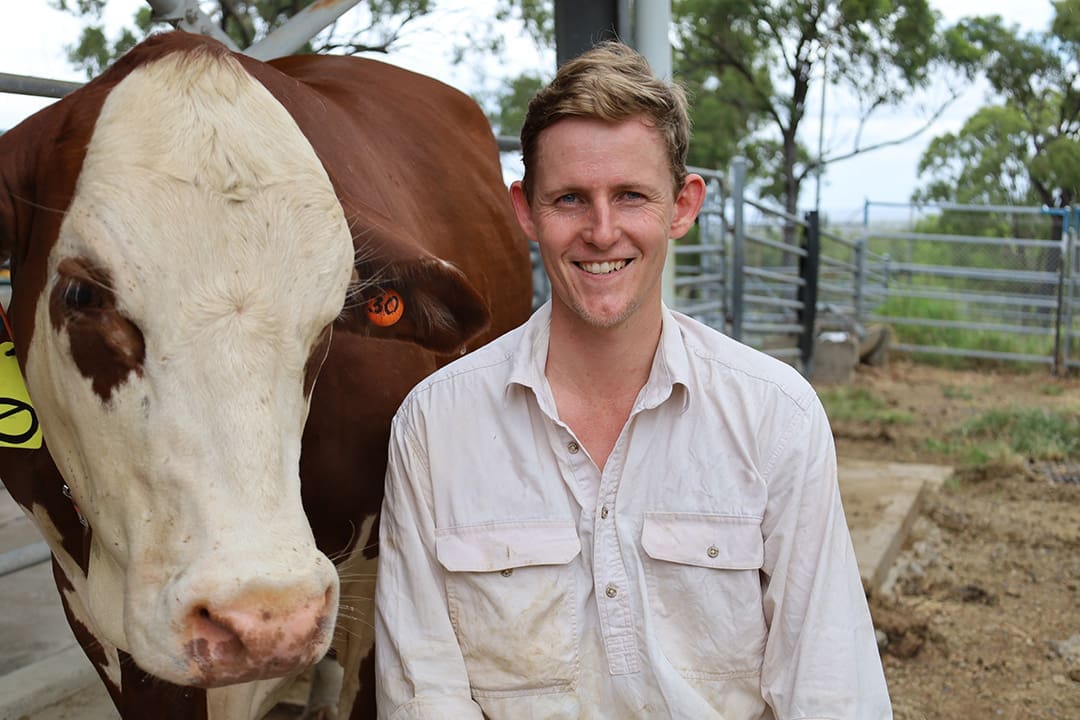CQUniversity’s precision livestock management research team is one step closer to predicting and detect calving events in extensive grazing herds using global navigation satellite systems (GNSS).
The discovery has the potential to provide beef producers in northern Australia with a way to remotely monitor their cattle and improve calf survival rates, one of the biggest challenges facing the industry.
“This is the highest risk period in terms of calf survival so to be able to predict and detect these events gives graziers the opportunity to mitigate losses through timely intervention,” lead researcher Dr Thomas Williams said.
The research project used GNSS collars – which feature both GPS and motion detecting accelerometer sensors – on 30 cows in a 28-hectare paddock over an eight-week period at Belmont Research Station, north of Rockhampton.
The collars captured the animals’ location information every 10 minutes.
That data was used to calculate predictive features at and around calving events that were visually confirmed by the research team.
The location data showed the number of other animals within a 20-metre radius of a pregnant cow decreased significantly in the lead up to a birth, supporting a known isolation behaviour.
“Previous research has shown that livestock isolate themselves during calving, selecting an area to give birth away from the herd,” Dr Williams said.
“In this particular study, the distance between the cow and the herd peaked on the day before calving.”
The findings, recently published in the international journal, Animal Production Science, will help pave the way for producers in northern Australia to monitor their animals in a way that overcomes many of the challenges in extensive grazing operations, such as distance and terrain.
Dr Williams said the findings provide further evidence that on-animal sensors were likely to become a viable solution for monitoring and reacting to calving events in a commercial setting.
“With further development of predictive algorithms, GNSS technology could be used in the future to detect births within a 24-hour window,” he said.
The study, which used commercially available GNSS collars, is part of the ‘Calf 48 Hour’ project led by CQUniversity in partnership with the Northern Territory Department of Industry Tourism and Trade and funded by Meat and Livestock Australia.
It aims to better understand why and how calves are being lost in the first two days of life and develop sensor systems that will one day be used by producers to monitor their own cattle and determine the causes of losses in their specific conditions.
Source: CQ University





Good Day . I find your research on the prediction of Pregnant cows very interesting. I am a extensive cattle farmer in South Africa. Our challenges are also the same as in Australia. But we also face theft of animals as a challenge. So the GNNS meters may assist in both goals . Do you know what the price per GNNS meter will be ?